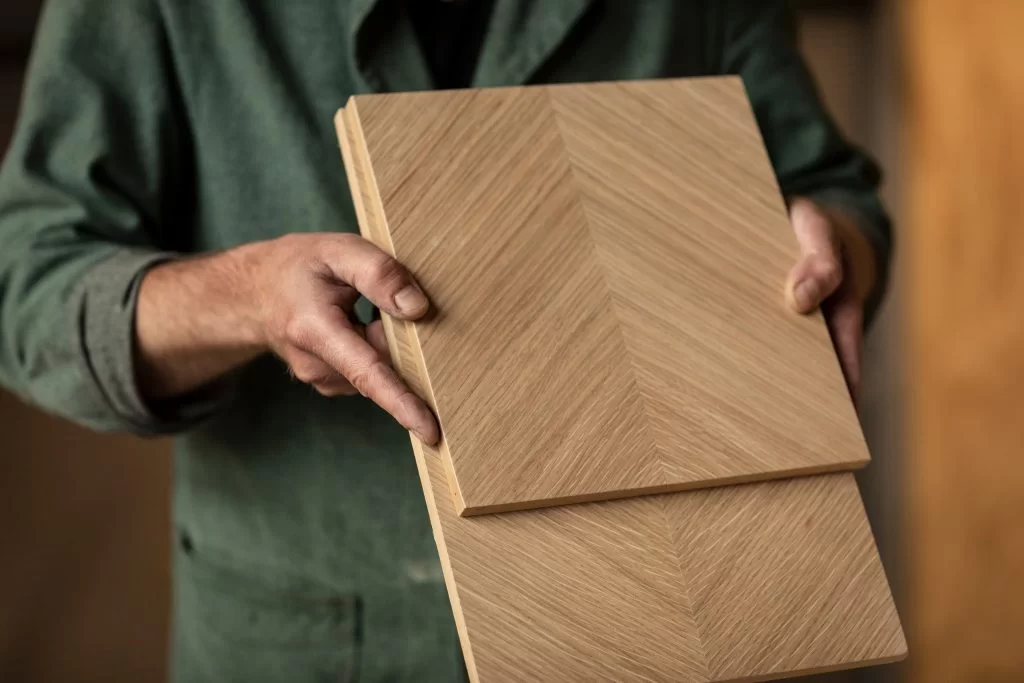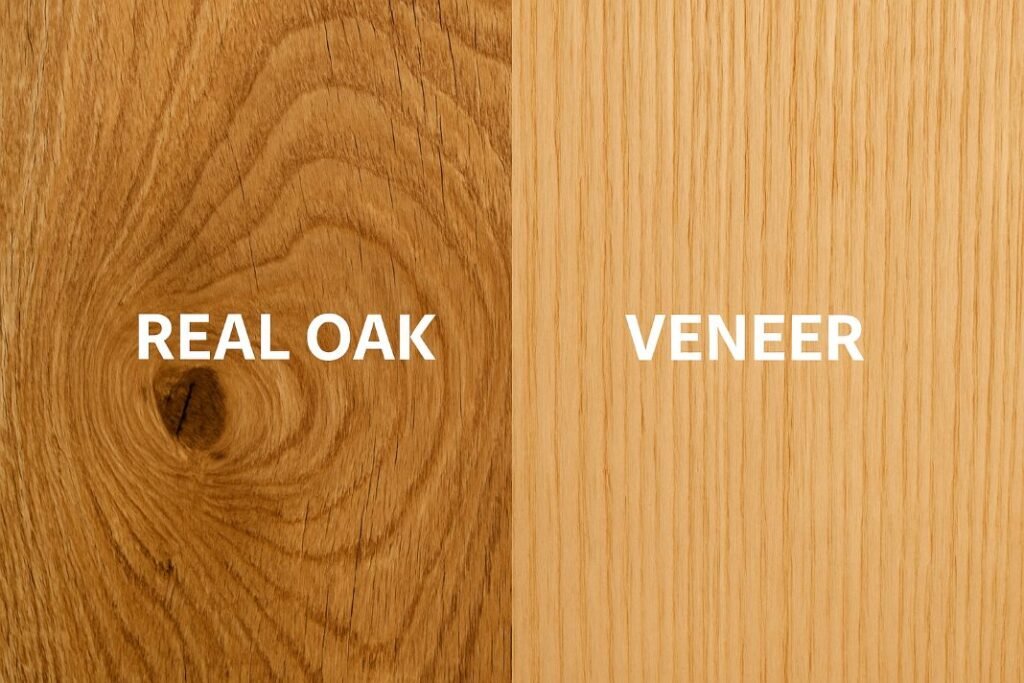
Why Timber Furniture is Perfect for a Rustic or Modern Home
When choosing furniture, understanding the materials used is crucial for making a decision that balances durability, aesthetics, and cost. Two common types of wood furniture are solid timber furniture and veneer furniture. While they may look similar at first glance, their construction, performance, and price points differ significantly. Here’s a comprehensive look at timber vs. veneer furniture to help you choose the best option for your home.

What is Solid Timber Furniture?
Solid timber furniture is crafted entirely from natural wood, cut from single pieces or joined planks. This means every visible and structural part of the furniture is made of real wood. Popular timber types include oak, teak, walnut, and maple, each offering unique grain patterns and colors.
Advantages of Solid Timber Furniture
- Durability: Solid timber is strong and long-lasting, often outliving other furniture types. It can withstand heavy use and can be repaired or refinished multiple times.
- Natural Beauty: The grain and texture of natural wood create a warm, authentic appearance that ages beautifully over time.
- Sustainability: When sourced responsibly, solid timber can be environmentally friendly, especially compared to synthetic alternatives.
- Value: Solid wood furniture often retains or even increases in value over time, particularly when made from premium hardwoods.
What is Veneer Furniture?
Veneer furniture is made by gluing thin slices of high-quality wood (the veneer) onto a core material, usually particleboard, MDF, or plywood. This process creates the appearance of solid wood at a lower cost and weight.
Advantages of Veneer Furniture
- Affordability: Veneer furniture is generally less expensive because it uses less natural wood and more engineered materials.
- Design Flexibility: Veneers can mimic expensive or rare wood grains, allowing for a wide range of looks at a lower price.
- Stability: The engineered core resists warping and splitting better than solid wood, especially in varying humidity or temperature conditions.
- Lightweight: Veneer furniture tends to be lighter and easier to move than solid timber pieces.
Key Differences Between Timber and Veneer Furniture
| Feature | Solid Timber Furniture | Veneer Furniture |
|---|---|---|
| Material | Made entirely of natural wood | Thin wood slices glued on engineered core |
| Durability | Very durable, can be sanded and refinished | Less durable, prone to damage if veneer peels |
| Cost | Generally more expensive | More budget-friendly |
| Appearance | Unique grain and natural variations | Mimics wood grain but can look uniform |
| Weight | Heavier | Lighter |
| Maintenance | Can be repaired and refinished multiple times | Limited repair options, veneer damage is permanent |
| Environmental Impact | Sustainable if sourced responsibly | Uses less wood but core materials vary |
Which Should You Choose?
Choose Solid Timber If:
- You want furniture that will last a lifetime and can be refurbished multiple times.
- You prefer the natural look, feel, and scent of real wood.
- You’re willing to invest more upfront for higher quality and durability.
- You want a sustainable piece sourced from responsibly managed forests.
Choose Veneer If:
- You need affordable furniture that looks like solid wood.
- You want lightweight, easy-to-move furniture.
- Your budget is limited, but you still desire a wood-like appearance.
- You’re furnishing a temporary space or want pieces that won’t be heavily used.
Caring for Timber and Veneer Furniture
Both types require proper care to extend their lifespan:
- For solid timber, avoid prolonged exposure to moisture and direct sunlight, and periodically apply wood oil or wax.
- For veneer furniture, clean with a soft cloth and avoid abrasive cleaners to prevent peeling or chipping.
Final Thoughts
Both solid timber and veneer furniture have their places in modern homes, each with pros and cons tailored to different needs and budgets. Understanding these differences helps you select furniture that not only looks great but also fits your lifestyle and investment goals. Whether you opt for the timeless durability of solid timber or the affordable elegance of veneer, making an informed choice ensures satisfaction for years to come.




